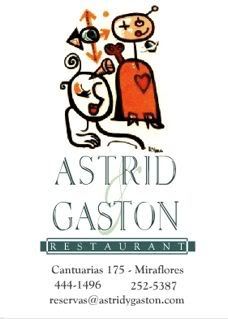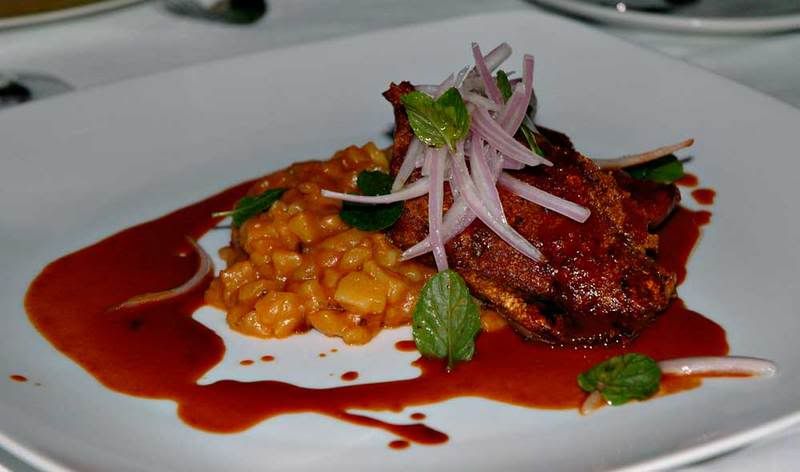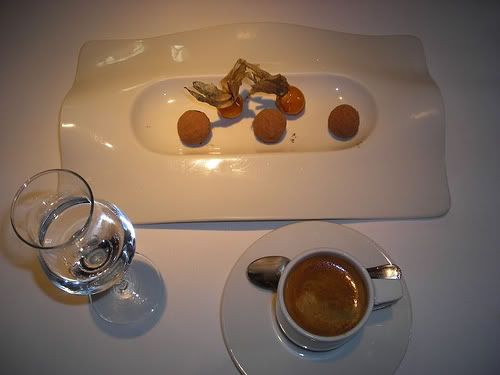 What could be more all-American than making homemade fruit preserves on Memorial Day? Here at orenji catering we imagine that in between sewing the stripes on the American flag, Betsy Ross spent a great deal of time canning and preserving fruits and vegetables... so why shouldn't we? Of course, we took a traditional recipe, and "updated" it with some of our favorite flavors!
What could be more all-American than making homemade fruit preserves on Memorial Day? Here at orenji catering we imagine that in between sewing the stripes on the American flag, Betsy Ross spent a great deal of time canning and preserving fruits and vegetables... so why shouldn't we? Of course, we took a traditional recipe, and "updated" it with some of our favorite flavors!
Thursday, May 31, 2007
Memorial Day: Homemade Preserves
Tuesday, May 29, 2007
orenji on the road: eating cuy in lima
 Guinea pigs are a staple of Peruvian cuisine. Originally domesticated in the Andes, due to the small amounts of space necessary to raise them, the rapid reproduction rates, and their high-protein meat, guinea pigs (or "cuy" as they are called) are still eaten to this day. In fact, they are so much a part of Peruvian culture, the cathedral in Cusco, Peru contains a large painting (painted in the European style of the time, but by local artists) depicting the 12 disciples of Christ eating cuy at the last supper!
Guinea pigs are a staple of Peruvian cuisine. Originally domesticated in the Andes, due to the small amounts of space necessary to raise them, the rapid reproduction rates, and their high-protein meat, guinea pigs (or "cuy" as they are called) are still eaten to this day. In fact, they are so much a part of Peruvian culture, the cathedral in Cusco, Peru contains a large painting (painted in the European style of the time, but by local artists) depicting the 12 disciples of Christ eating cuy at the last supper!
The guinea pig, as you can see from the photos above, is served whole (quartered), with the head (and claws) still on. The meat itself was rather thin, stringy, and earthy, much like the dark meat on a chicken or duck-- but enjoyable nonetheless.

We experienced a number of other local foods, including alpaca, local potatoes, large-kerneled white corn, local fresh cheeses, and fruits while in Peru. More importantly, perhaps, we tried many local beverages as well. We will discuss some of these in our next 'orenji on the road' blog!
Sunday, May 27, 2007
figs re-imagined...
 A few months back we posted about a refreshing candied fig, Meyer lemon, mascarpone cheese, and bittersweet chocolate tart in a rosemary-cornmeal crust. At that time, we began experimenting with candying figs in our test kitchens, which we have continued to do from time to time (The photos on the left and below are golden Turkish Calimyrna figs that we candied for the above-mentioned tart).
A few months back we posted about a refreshing candied fig, Meyer lemon, mascarpone cheese, and bittersweet chocolate tart in a rosemary-cornmeal crust. At that time, we began experimenting with candying figs in our test kitchens, which we have continued to do from time to time (The photos on the left and below are golden Turkish Calimyrna figs that we candied for the above-mentioned tart). 

Friday, May 25, 2007
orenji on the road: lima, peru (part 2)
 We continued our culinary tour of Lima, Peru with a quiet dinner at what may be the best restaurant in Peru-- even South America. According to Gourmet magazine, Lima is one of the up-and-coming culinary cities in the world, with Astrid y Gaston being the restaurant at the forefront of the culinary movement. When we read that assertion prior to our trip, we knew we couldn't go to Lima without experiencing this restaurant!
We continued our culinary tour of Lima, Peru with a quiet dinner at what may be the best restaurant in Peru-- even South America. According to Gourmet magazine, Lima is one of the up-and-coming culinary cities in the world, with Astrid y Gaston being the restaurant at the forefront of the culinary movement. When we read that assertion prior to our trip, we knew we couldn't go to Lima without experiencing this restaurant!
Dinner started with a basket of freshly prepared breads (already mostly demolished in the picture below) with a deliciously fresh fruit and yellow tomato relish.
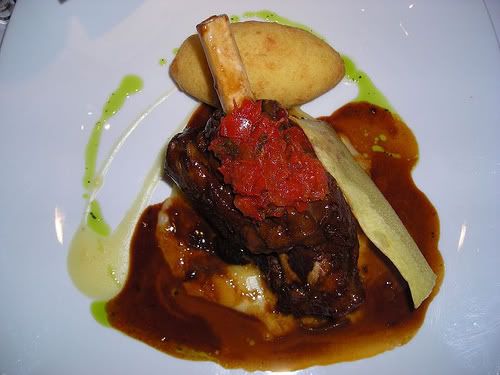
Monday, May 21, 2007
making ume-shu うめしゅ(梅酒)
 Ume-shu [うめしゅ(梅酒)] is a Japanese liqueur made from green Japanese plums (ume), rock sugar, and Shōchū (a clear alcohol distilled from rice). It is prepared by steeping green ume in shōchū for extended periods of time. In fact, patience is the most important ingredient in the classic ume-shu recipe! Traditionally made in the springtime, during the harvest time for green plums, the finished product is not drinkable until the cold autumn months (at the earliest). In fact, most ume-shu is stored in a dark place for at least one year prior to drinking. The longer the steeping process, the darker the color, the sweeter and more intense the flavor. Like most things in cooking, patience is rewarded!
Ume-shu [うめしゅ(梅酒)] is a Japanese liqueur made from green Japanese plums (ume), rock sugar, and Shōchū (a clear alcohol distilled from rice). It is prepared by steeping green ume in shōchū for extended periods of time. In fact, patience is the most important ingredient in the classic ume-shu recipe! Traditionally made in the springtime, during the harvest time for green plums, the finished product is not drinkable until the cold autumn months (at the earliest). In fact, most ume-shu is stored in a dark place for at least one year prior to drinking. The longer the steeping process, the darker the color, the sweeter and more intense the flavor. Like most things in cooking, patience is rewarded!
On the right, ume-shu that has steeped for two years. On the left, unsteeped Shōchū:
To make ume-shu, only a few ingredients are required:
1) Rock Sugar (pictured above, left)
2) Shōchū (Korean variety pictured above, back left; Japanese pictured below, left)
3) Japanese Green Plums (pictured below, right).

The ingredients are combined together in an air-tight container, and allowed to steep in a cool, dry place...
Of course, many varieties of "shu" can be made. In the past we have made grapefruit, cherry, pineapple, asian pear, and ginger. This year, not only did we make ume-shu, but also lemon-shu.

We used sliced fresh lemons, as well as some peeled lemons (removing the pith from the fruit to decrease bitterness).
This year we further augmented our previously steeped ginger-shu with the fresh aromatics of lemongrass. To do so, we added more rock sugar and fresh sliced lemongrass to the existing ginger-shu. We can't wait to see how our experiment tastes!

Traditionally, shu is served on the rocks or with various mixers (soda, tonic, etc.) Of course, for the adventurous, shu can be made in fantastic martinis or other mixed drinks.
As they say in Japan, kanpai! [かんぱい!(乾杯)]... that is, cheers!
Sunday, May 20, 2007
a golden birthday cake
 We were recently asked to prepare a special birthday cake for a dear friend's surprise birthday party. The cuisine at the party was to be traditional Italian, and we thought the cake should match... so we embarked on a creative journey which resulted in the cake pictured to the right.
We were recently asked to prepare a special birthday cake for a dear friend's surprise birthday party. The cuisine at the party was to be traditional Italian, and we thought the cake should match... so we embarked on a creative journey which resulted in the cake pictured to the right.


The cake was covered with a bittersweet chocolate ganache, and topped with a bouquet of hand-modeled bittersweet and white chocolate roses and leaves. The leaves themselves were brushed with edible gold dust, to give them a celebratory sheen as well as create some contrast against the dark canvass of ganache.




Saturday, May 19, 2007
orenji on the road: lima, peru
 After a long hiatus, we are back to our old blogging ways! Too busy to blog over the last few months, you ask? We would have to answer, 'yes!', which is a good thing. You can expect the posts to resume, including five blogs about our recent trip to Peru, recent events and creations, and some fun photo essays of events from the past.
After a long hiatus, we are back to our old blogging ways! Too busy to blog over the last few months, you ask? We would have to answer, 'yes!', which is a good thing. You can expect the posts to resume, including five blogs about our recent trip to Peru, recent events and creations, and some fun photo essays of events from the past.
We started our tour of Peru and Bolivia with a "culinary tour" of Lima. Lima is a bustling city rich in history-- both local and imported European. The cuisine reflects the abundance of locally available fruits, vegetables, meats, and seafoods, oftentimes influenced in preparation by the varied cultures and groups who occupied the area throughout its rich history.
Our first stop on the culinary tour was a delightful, semi-outside "cebicheria" named La Mar. It was explained to us that it "never rains in Lima" due to its elevation and micro-climate. Therefore, the restaurant is relatively open, affording a pleasant breeze and feeling of spaciousness, even as the diners crowd in to sample the fresh fish.


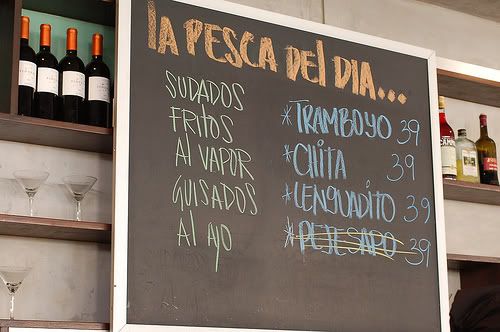

Our meal started with a bucket of fried plantain and vegetable chips, served with three delicious dipping sauces: cilantro and mint, roasted pepper, and chili.
We also sampled some deliciously refreshing (and strong!) local drinks... but more on those in a future post.



The marinade used in cebiche is citrus based, with lemons and limes being the most commonly used. In addition to adding flavor, the citric acid causes the proteins in the seafood to become denatured, which pickles or "cooks" the fish without heat. The result tastes more like a cooked dish and less like raw fish preparations such as Japanese sashimi. Old style cebiche was left up to 3 hours for marinade. Modern style cebiche usually has a very short marinating period. With the appropriate fish, it will marinate for as long as it takes to mix the ingredients, serve and carry to the table.
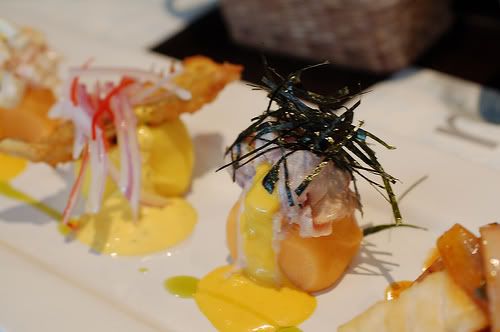
Following cebiche and causitas, we relied on our guides to suggest some additional local delicacies to sample...even though we were getting full at that point! We sampled some delicious broiled scallops with local cheese, pan sauteed calimari salad with peanuts and frizzled ginger, and stuffed and fried crab with roasted tomatoes and bok choy. We finished the meal with a delicious pumpkin ravioli (not pictured).



Alas, there was no room left for dessert. Then again, it was just our first stop on the culinary tour! Check back for our future food adventures, including a visit to the open-air markets, trying cuy (guinea pig)--a local favorite, a review of Peruvian drinks, and our fine-dining experience at Astrid y Gaston-- the finest restaurant in Lima. Buen Provecho!















